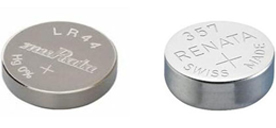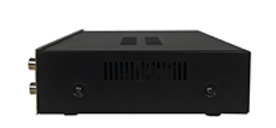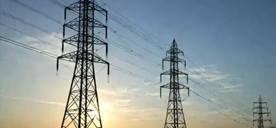Valve-Regulated Lead-Acid Batteries: Basics, Performance, and Care
2024/6/26 10:18:16
Views:
what is a valve regulated lead acid battery
Valve-regulated lead-acid (VRLA) batteries, developed in the 1970s, are a significant type of energy storage device. By 1975, they had achieved considerable production scale in some developed countries and were rapidly industrialized and mass-marketed. Although VRLA batteries are a form of lead-acid battery, they offer several advantages over traditional lead-acid batteries and are widely used in applications such as uninterruptible power supplies (UPS), solar systems, telecommunications equipment, mobile communication devices, computers, and motorcycles. This article will detail the working principles, capacity characteristics, and maintenance methods of VRLA batteries.
what is vrla,what is vrla type battery,what does vrla mean on a battery
Working Principle of VRLA Batteries
VRLA batteries, also known as sealed regulated lead-acid batteries, use sealed and valve-regulated technology to effectively control gas release and moisture loss, offering longer lifespans and more stable performance than conventional lead-acid batteries. The working principle involves two key processes: charging and discharging. During charging, lead sulfate on the battery plates is converted into lead and lead dioxide through electrical current. During discharging, the chemical reactions inside the battery reverse, generating electrical current.
Because VRLA batteries are completely sealed and do not leak acid, they prevent the release of acid mist during charging and discharging, thus avoiding equipment corrosion and environmental pollution. These batteries are therefore called "sealed lead-acid batteries," distinct from the older "open lead-acid batteries."
The working principle of VRLA batteries is the same as that of open lead-acid batteries, involving the same electrochemical reactants and energy conversion processes. During charging, lead sulfate at the positive electrode is converted into lead dioxide, while at the negative electrode, it is converted into sponge lead, storing chemical energy. These reactions reverse during discharge, releasing electrical energy. The efficiency of the battery requires that the amounts of active material in the positive and negative plates be matched to maximize energy conversion. These processes can be represented by the following electrochemical reaction equation:
PbO2 + Pb + 2H2SO4 ←→ 2PbSO4 + 2H2O
In this reaction, from left to right represents the discharging process, and from right to left represents the charging process.
Capacity Characteristics
1. Temperature and Capacity:
Temperature is one of the primary factors affecting the capacity of VRLA batteries. As temperature increases, battery capacity increases; as temperature decreases, capacity decreases. The ideal operating temperature is typically between 20°C and 25°C. When the battery's discharging temperature is not the reference temperature of 25°C, the actual capacity must be converted to the nominal capacity at 25°C using the following formula:
Here, Ct is the measured capacity, Ce is the actual capacity at 25°C (nominal capacity), KT is the temperature coefficient, and T is the actual temperature. For a 10h discharge rate, KT = 0.006/°C; for a 3h rate, KT = 0.008/°C; for a 1h rate, KT = 0.01/°C.
2. Capacity and Plate Weight:
The weight of the battery plates typically indicates that the battery can store more energy, as heavier plates can contain more active material, thereby increasing the overall capacity of the battery. The lead plates used in VRLA batteries are similar to those in automotive batteries but differ slightly in weight and appearance. For example, a 12V/100Ah VRLA battery from the same manufacturer may differ in appearance and weight from an automotive battery's plates, although they have the same nominal capacity.
3. Capacity and Service Life:
A battery's capacity and service life are intimately correlated. After multiple charge and discharge cycles, the capacity of the battery gradually decreases due to the loss of active material and internal structural changes. VRLA battery design lives range from six to twenty years, primarily based on plate manufacturing, weight, and valve sealing technique.
For instance, the plate weight of a battery designed for a 20-year life is approximately double that of a 10-year life battery.Furthermore, the weight of a 200Ah battery is roughly twice that of a 100Ah battery.
Despite the factors determining the design life of VRLA batteries, the actual service life mainly depends on internal water loss and external conditions such as temperature, voltage, and depth of discharge. The battery can only achieve the expected design life under design conditions. When external conditions vary beyond design requirements, both the actual service life and capacity significantly decline.
Monitoring and Maintenance of VRLA Batteries
Effective monitoring and maintenance can significantly extend the service life and enhance the performance of VRLA batteries.
1.Monitoring Challenges:
Due to the sealed absorbent structure of VRLA batteries, their capacity and performance are difficult to monitor. Unlike traditional open-cell batteries, which allow for visual inspection of liquid levels and electrode plates and detection of acid smell, it is challenging to measure the specific gravity of the electrolyte and internal pressure in VRLA batteries. Main battery failures and capacity degradation are typically caused by drying out and sulfation of the electrode plates, and merely measuring open-circuit voltage does not accurately determine battery capacity [A battery is usually considered failed when its capacity falls to 80% of its nominal capacity].Currently, the following capacity monitoring methods are commonly used:
(1) Online Conductance Testing:
In countries like the USA, Germany, and the UK, conductance technology is commonly used to assess the capacity of VRLA batteries. This method does not require discharging or opening the cover. For example, the conductance meter patented by the US company Midtronics is an online measurement tool.
Its principle involves applying a low-frequency AC signal voltage across the battery terminals and measuring the ratio of current to voltage (i.e., conductance, only calculating the real part of admittance), measured in milliohms or Siemens, reflecting the battery's current conduction capability while online. Installation requires establishing a set of conductance value measurement curves so that during regular checks, if the conductance value falls below 80% of the initial test value, it indicates that the battery capacity is below 80% of its nominal capacity. Specific operations can refer to the product manual.
(2) Simulated Load Discharge Testing:
This method is similar to the traditional open-cell battery capacity measurement and remains a practical choice.
For example, when there are two sets of backup batteries, one set can be selected for a simulated load discharge test, which can accurately measure the actual capacity of VRLA batteries. It is important to note that different manufacturers may have different specifications for the discharge termination voltage, some at 1.75V/cell, some at 1.80V/cell.
Typically, the battery's terminal voltage will rapidly drop from a higher value to a lower stable value at the start of discharge (e.g., from 2.20V to about 2.05V, then steadily decline within the 2.0 to 1.8V range) until the termination voltage is reached, after which the terminal voltage will sharply drop to 0V, showing a distinct drop curve.
According to national standards, the C10 nominal capacity value measured by a 10-hour rate discharge is Ce, and the discharge current is 0.1 IC10A. For a 3-hour rate discharge, the discharge current is 0.25 IC10A, and the capacity is 75%Ce; for a 1-hour rate discharge, the discharge current is 0.55 IC10A, and the capacity is 55%Ce.
(3) Visual Inspection Method:
Check whether the battery casing is bulging, dented, the connecting bars are discolored, cable heads and connecting screws are discolored, whether there is acid mist or other odors, whether the cables are overheated, and whether the casing is overheated, etc.
Additionally, a voltmeter can be used to determine whether the voltage in the group is constant, if the voltage in each battery is the same (an increase in internal resistance typically results in a voltage increase), and if the voltage in the battery is lower than 12V (a charging battery may be damaged if its voltage falls below 12V and it is disconnected from the float charge source).
If necessary, quickly open and reclose the valve cover (usually not recommended unless there are serious concerns about the battery's state), check whether the plates are sulfated, and whether the inside of the absorbent glass mat is dried out, etc.
2. Maintenance of VRLA Batteries
VRLA batteries are highly sensitive to environmental temperature. The ideal operating temperature range is 20-25°C. If the ambient temperature is too high, the heat generated during charging cannot be dissipated into the air in time, which not only accelerates the consumption of the electrolyte but also may cause the electrolyte to lose water through the casing, increasing the specific gravity of the electrolyte and causing corrosion of the positive grid, ultimately leading to the battery failing before reaching its designed lifespan.
To prevent these issues, VRLA batteries should be rigorously maintained according to the manufacturer's guidelines, setting the switching power supply strictly. Regularly adjust the float charge voltage according to the operation of the battery and charging equipment to ensure it meets the requirements of VRLA batteries, preventing excessive charging voltage that causes battery overcharging and water loss; also prevent too low a voltage, causing insufficient charging and sulfation of the plates, significantly reducing battery capacity. Advanced operating equipment has a temperature compensation function that can automatically adjust operating parameters based on the operating environment.
Regularly check the capacity of VRLA batteries to accurately understand their actual state and take timely maintenance measures. Make sure that VRLA batteries always stay in good functioning order by performing routine maintenance. Only by strictly following the manufacturer's operating requirements can the service life of VRLA batteries approach the designed lifespan; otherwise, their lifespan may be shorter than that of ordinary batteries.
Frequently Asked Questions
1. Can VRLA batteries be recycled?- Yes, VRLA batteries are recyclable. To guarantee environmentally safe handling and disposal of these batteries, it's critical to adhere to the correct recycling processes.
2. What are the types of VRLA batteries?
- Absorbed glass mat (AGM) and gel are the two primary varieties. Gel batteries use a gelatinous electrolyte, while AGM batteries feature an electrolyte absorbed in fiberglass mats.
3. What benefits can VRLA batteries offer?
- VRLA batteries are maintenance-free, have a high capacity range, longer lifespan, and are more economical compared to traditional lead-acid batteries.
4. What is the difference between VRLA and regular lead-acid batteries?
- VRLA batteries are sealed with a valve to regulate pressure and gas buildup, making them maintenance-free, whereas regular lead-acid batteries often require topping up of electrolyte and more frequent maintenance.
5. Can VRLA batteries be used in any orientation?
- Yes, VRLA batteries can be used in any orientation without the risk of leakage due to their sealed design, although it is recommended to keep them upright for optimal performance and longevity.
6. How do VRLA batteries handle extreme temperatures?
- VRLA batteries are more resistant to extreme temperatures compared to traditional batteries, providing reliable performance across a wide range of environmental conditions.
7. What applications are VRLA batteries used for?
- They are commonly used in UPS systems, telecom equipment, emergency lighting, electric vehicles, and renewable energy systems due to their reliability and maintenance-free characteristics.
Related Information
-
-
Phone
+86 135 3401 3447 -
Whatsapp





